Hungarian lilac: description, tips for choosing and care
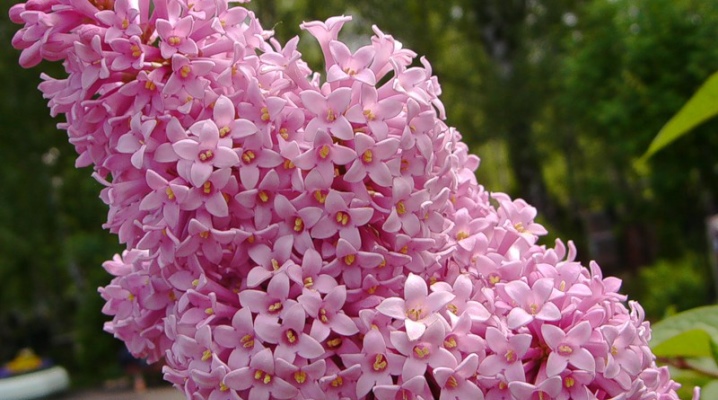
Hungarian lilac is one of the most suitable solutions for decorating a garden plot. The unpretentiousness of this variety, together with an attractive appearance, makes it ideal for both individual planting and for the formation of a hedge.
Description
Hungarian lilac was domesticated back in 1830, and since then has been actively used both for urban landscaping and for gardens with flower beds. This species is called one of the most suitable for growing in regions with low winter temperatures. Since the shrub grows very compact, not exceeding 4 meters in height, it is often used to form a hedge. The diameter of the ovoid crown of the lilac is much smaller than the height, which provides the external attractiveness of the culture. Having reached the extreme size indicator, the Hungarian lilac ceases to visually change, and a neat rounded crown does not even need to be specially shaped.
The shoots of this plant are directed upwards, rather dense and branching. Young shoots are painted in a rich purple hue, while more mature ones look standard. The shape of the leaf, in principle, repeats the shape of other types of lilacs, but is characterized by the presence of a cannon on the lower surface, running along the midrib, as well as a ciliated edge. The length of one leaf can reach 13 centimeters. Over the course of a month, it changes color from dark green to bright purple. Such lilac does not create root offspring.
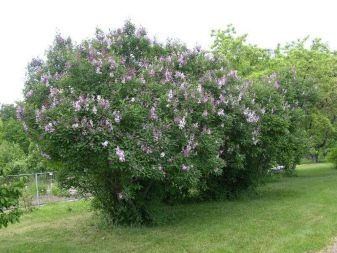
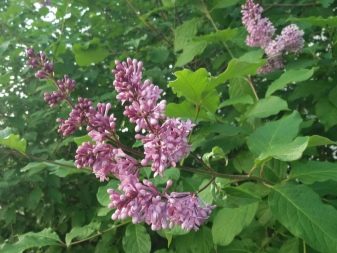
Small flowers have a pleasant scent and look very graceful. The diameter of one tubular flower is within 1 centimeter, but the length of the inflorescences can reach 30 centimeters. Its color is determined depending on many parameters, such as age, climatic conditions and soil conditions. The bright purple color does not change significantly, only its tones vary. Flowering of this species begins several weeks after the beginning of flowering in common lilac.
The first flowers are expected to appear in the last days of May and continue for three weeks. After flowering is complete, red fruits appear on the bush, which either ripen around October, or remain hanging until spring.
With proper care and favorable climatic conditions, the life expectancy of Hungarian life can reach hundreds of years. Such a bush will bear fruit approximately 90 times.

Varieties
Hungarian lilac does not differ in a large number of varieties - in the gardens there is only the basic version plus several of its forms. The latter include the pale form, characterized by the presence of a faded, as if faded shade, the red-flowered form with purple flowers, the white-flowered and pink-flowered forms.

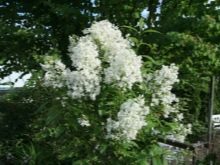

Landing rules
Hungarian lilac seedlings will feel good both in the sun and in the shade. The culture is allowed to be planted even next to large shrubs or even trees that create twilight. It should also be added that next to the Hungarian lilac, it is recommended to plant spireas, phloxes, sage, hydrangea, as well as other ornamental shrubs and herbaceous perennials. The shrub will look good both individually and as part of a group or hedge.Lilacs can even endure the proximity of highways or travel roads.
With regard to soils, this species does not have any special requirements. The land should only be cultivated, and everything else is, in fact, unimportant. Of course, if the soil turns out to be loamy, fertile and moderately moist, this will even benefit the plant, but even in less favorable conditions it will develop effectively.
It is important to avoid lowlands, as stagnant fluid is detrimental to the development of any culture. In the most favorable case, the soil should be either neutral, or have low acidity, or nutritious, slightly moistened and well-loosened.


Planting dates for Hungarian lilacs correspond to planting dates for other varieties of lilacs. Experts recommend carrying out the procedure at the turn of August and September. In principle, planting in early spring or late autumn is not prohibited, but the culture in this case will develop rather slowly in the first 12 months. The main thing is to have time to meet the two-week deadline. before the start of frost, so that the root system has the opportunity to get used to the new habitat.
The holes should be dug quite deep. The depth, width and length of each should be 50 centimeters. The initial feeding is carried out as desired, it will not get worse from it, but this is not necessary.
Having completed the planting, the seedlings should be shortened by several buds, the garden should be well irrigated and mulched. It is believed that the Hungarian lilac can be transplanted at any time - it will tolerate this process without any problems.


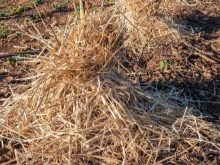
For boarding, which must be carried out in the evening, it is important to pick up seedlings with a root of at least 30 centimeters. When placing them in the garden, you should keep at least a few meters between the holes. In addition, the verticality of their walls is important. By the way, if the soil does not have sufficient nutritional value, the size of the holes should be twice as large. To fill the pit, it is recommended to make a mixture with humus. In the case of alkaline soil, add compost, superphosphate and 300 grams of wood ash.
The bush is installed strictly in the center of the pit, its roots are straightened and everything is filled with an earthen mixture. After tamping, abundant watering follows - from 20 to 25 liters for each bush. Mulch forms after a while. To create it, you will need either humus or rotting foliage, which will form a layer approximately 7 centimeters thick.

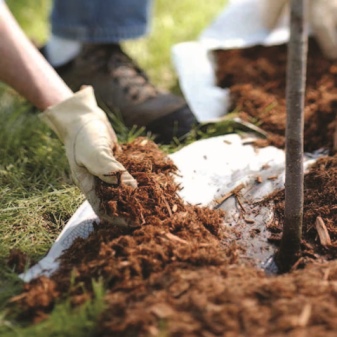
How to care?
Caring for the Hungarian lilac is greatly facilitated, since it is not afraid of drought and calmly tolerates the absence of additional watering, even in dry times. The plant will survive without regular fertilization, but it is still better to apply the basic mineral complex in the spring.
Top dressing
The first two years of lilacs will be enough to apply nitrogen fertilizers. From the third year, it is worth fertilizing the plant with manure diluted in water. It is important that there are five parts of the liquid per part of the fertilizer. Such feeding is carried out with great care so as not to fall on the trunk. It will be enough to feed the lilac with manure once every 12 months.
When the lilac can already be attributed to adult plants, it is additionally recommended to fertilize it with mineral complexes containing phosphorus and potassium. Top dressing is carried out in the spring, until flowering is over.
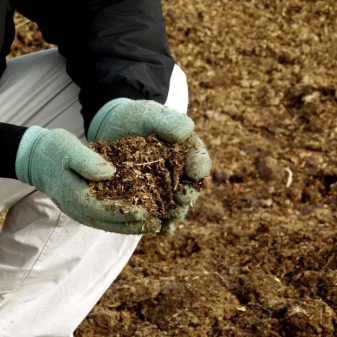

Watering
Irrigation of Hungarian lilacs should be sufficient, but not excessive. During the flowering period, especially in hot weather, its volume will have to be increased. In addition, it is recommended not to forget about loosening to ensure better oxygen transport to the root system.
During the first year, the earth is loosened every 3 months, and the shovel goes deep into the depths for an interval of 6 to 10 centimeters.
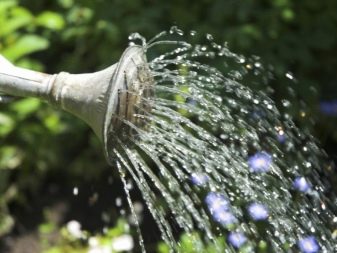
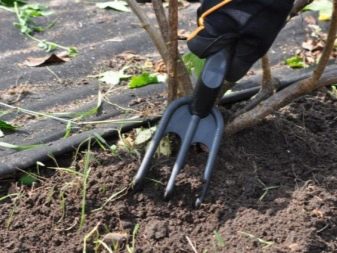
Disease and pest control
Of the possible diseases of the Hungarian lilac, brown and viral spots, as well as fungal phyllostictosis, threaten.As a rule, the symptoms can be seen even during the growing season on the leaves and timely treatment is carried out by removing the damaged parts. In addition, the bushes are often attacked by scale insects, ticks, and speckled moths. Again, an early detected problem is solved with the help of special purchased preparations, but a heavily damaged plant will have to be destroyed.



Pruning
Pruning Hungarian lilacs is carried out according to the usual rules for other varieties of lilacs. Somewhere in March, it is important to ensure the formation of the crown by thinning in order to prevent thickening, which not only interferes with development, but also often becomes the basis for the occurrence of diseases and the reproduction of pests. Besides, it is important to immediately remove faded inflorescences.
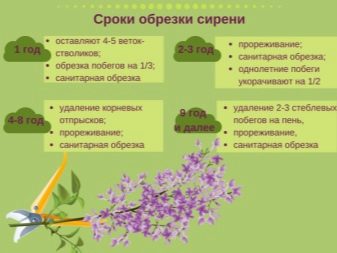
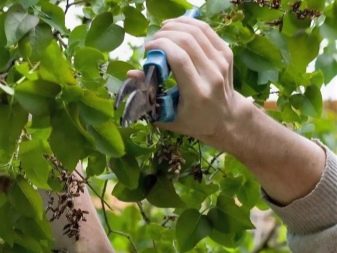
How to reproduce?
Since the Hungarian lilac is not provided with offspring, two methods have to be used to reproduce it.
- Using cuttings is considered to be more efficient., since in almost all cases they successfully root both in the case of green and already woody branches. Before planting seedlings, they must be checked and shortened by one or two buds, and the roots must also be cut. There is no need for stimulating solution treatment. The main thing is to cut and plant the cuttings after the flowering process has completed.
- Lilac seeds can be planted after completing the stratification process carried out at temperatures ranging from +3 to +5 degrees. It is recommended to carry out planting either in the fall or in the spring, having properly processed and prepared the beds.


How to prepare for winter?
The winter hardiness of the Hungarian lilac is very high, moreover, it is considered one of the most frost-resistant varieties. She does not need additional shelter, she will cope with even the lowest temperatures on her own. The shoots ripen before the frost sets in, so in the spring the culture is restored without problems. It is worth mentioning that even in the first year of life, the shrub does not need to be additionally prepared for the winter months. However, a newly planted seedling is still better protected with a ten-centimeter layer of dry near-stem peat or fallen leaves. It will be possible to remove the shelter when the average temperature exceeds +5 degrees Celsius.
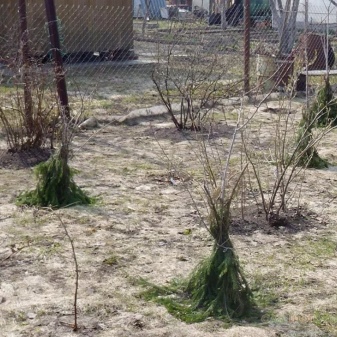
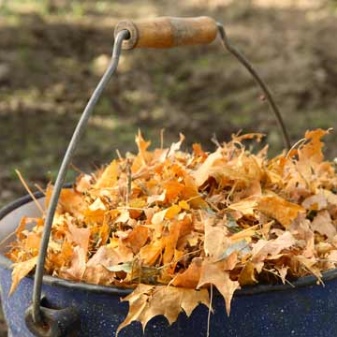
You will learn even more information about the Hungarian lilac in the video below.



































































The comment was sent successfully.